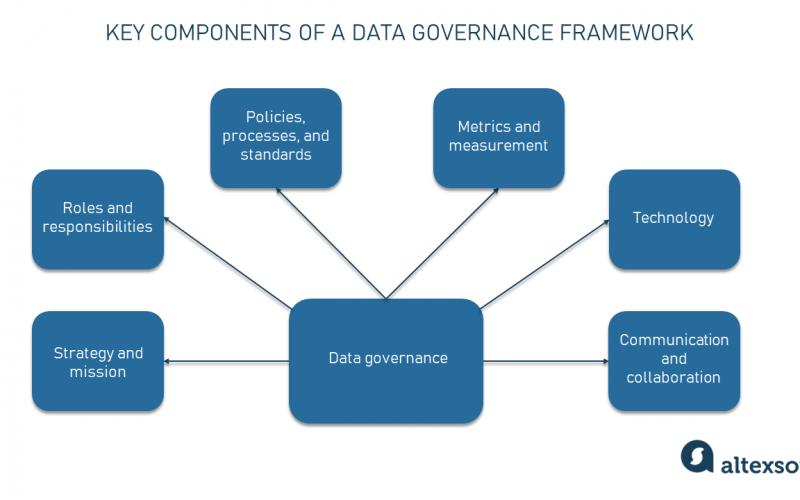Data governance frameworks and best practices provide guidelines and structures for organizations to manage and protect their data effectively. These frameworks ensure that data is properly handled, secured, and compliant with relevant regulations. Here’s an overview of data governance frameworks and some best practices:
- Data Governance Frameworks:
a. DAMA-DMBOK: The Data Management Body of Knowledge (DAMA–DMBOK) is a widely recognized framework that provides a comprehensive guide to data management practices. It covers various aspects of data governance, including data architecture, data quality, data security, and data ethics.
b. COBIT: Control Objectives for Information and Related Technologies (COBIT) is a framework that focuses on aligning IT governance with business objectives. It provides a structured approach to data governance, emphasizing risk management, control, and compliance.
c. ISO/IEC 38500: This international standard provides guidance for corporate governance of information technology. It includes principles and guidelines for effective information governance, which encompass data governance practices.
d. NIST Cybersecurity Framework: The National Institute of Standards and Technology (NIST) Cybersecurity Framework is a widely adopted framework for managing cybersecurity risks. It includes guidelines for data governance, emphasizing the protection of sensitive data and privacy.
- Data Governance Best Practices:
a. Clearly Define Roles and Responsibilities: Establish clear roles and responsibilities for data governance, ensuring that stakeholders understand their roles in managing and protecting data. This includes defining data stewards, data owners, and data custodians with well-defined responsibilities.
b. Develop Data Governance Policies and Standards: Create data governance policies and standards that outline best practices for data management, security, privacy, quality, and compliance. These policies should align with industry regulations and organizational requirements.
c. Data Classification and Categorization: Classify and categorize data based on its sensitivity, criticality, and regulatory requirements. This helps determine appropriate access controls, data handling procedures, and security measures for different types of data.
d. Data Quality Management: Implement processes and controls to ensure data quality, including data validation, cleansing, and monitoring. Establish data quality metrics and regularly measure and report on data quality to identify and address issues.
e. Data Security and Privacy: Implement appropriate security measures to protect data from unauthorized access, breaches, and data loss. This includes access controls, encryption, data anonymization, and compliance with privacy regulations (e.g., GDPR, CCPA).
f. Data Lifecycle Management: Establish processes for managing the lifecycle of data, including data creation, storage, usage, archival, and disposal. This ensures that data is retained for the required duration and disposed of securely when no longer needed.
g. Data Governance Communication and Training: Communicate data governance policies, guidelines, and changes to relevant stakeholders across the organization. Provide training and awareness programs to ensure employees understand their roles in data governance and are equipped with the necessary knowledge and skills.
h. Regular Auditing and Compliance Monitoring: Conduct regular audits to assess compliance with data governance policies and regulations. Monitor data usage, access logs, and user activity to identify anomalies or potential security breaches.
i. Data Governance Maturity Model: Define a data governance maturity model that outlines different levels of maturity and provides a roadmap for continuous improvement. This helps organizations assess their current state, set goals, and gradually enhance their data governance practices.
j. Continuous Improvement and Adaptation: Data governance is an ongoing process that needs to evolve with changing business needs, technology advancements, and regulatory requirements. Regularly review and update data governance practices to ensure their effectiveness and relevance.
Implementing a robust data governance framework and following best practices helps organizations ensure data integrity, security, and compliance. It fosters a culture of responsible data management and supports strategic decision-making based on accurate and trusted data
